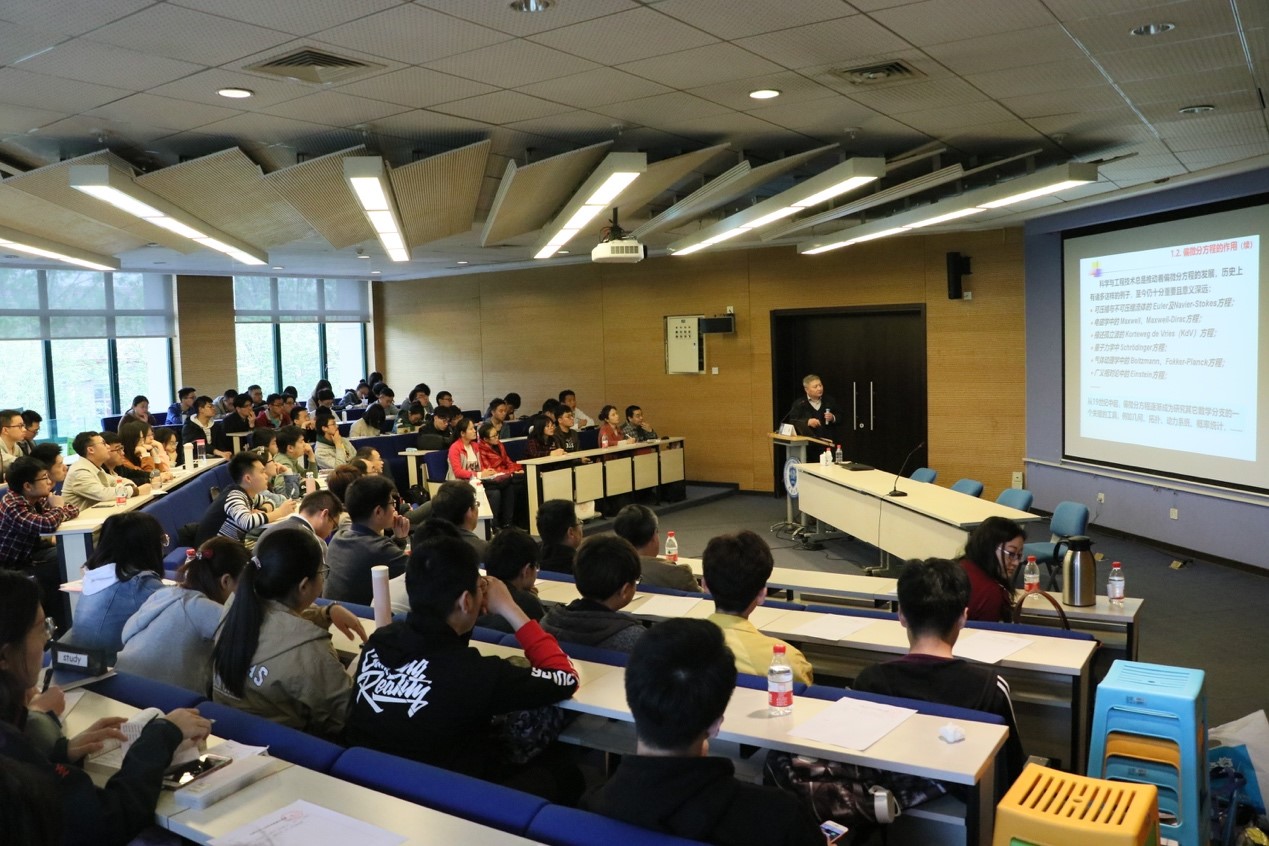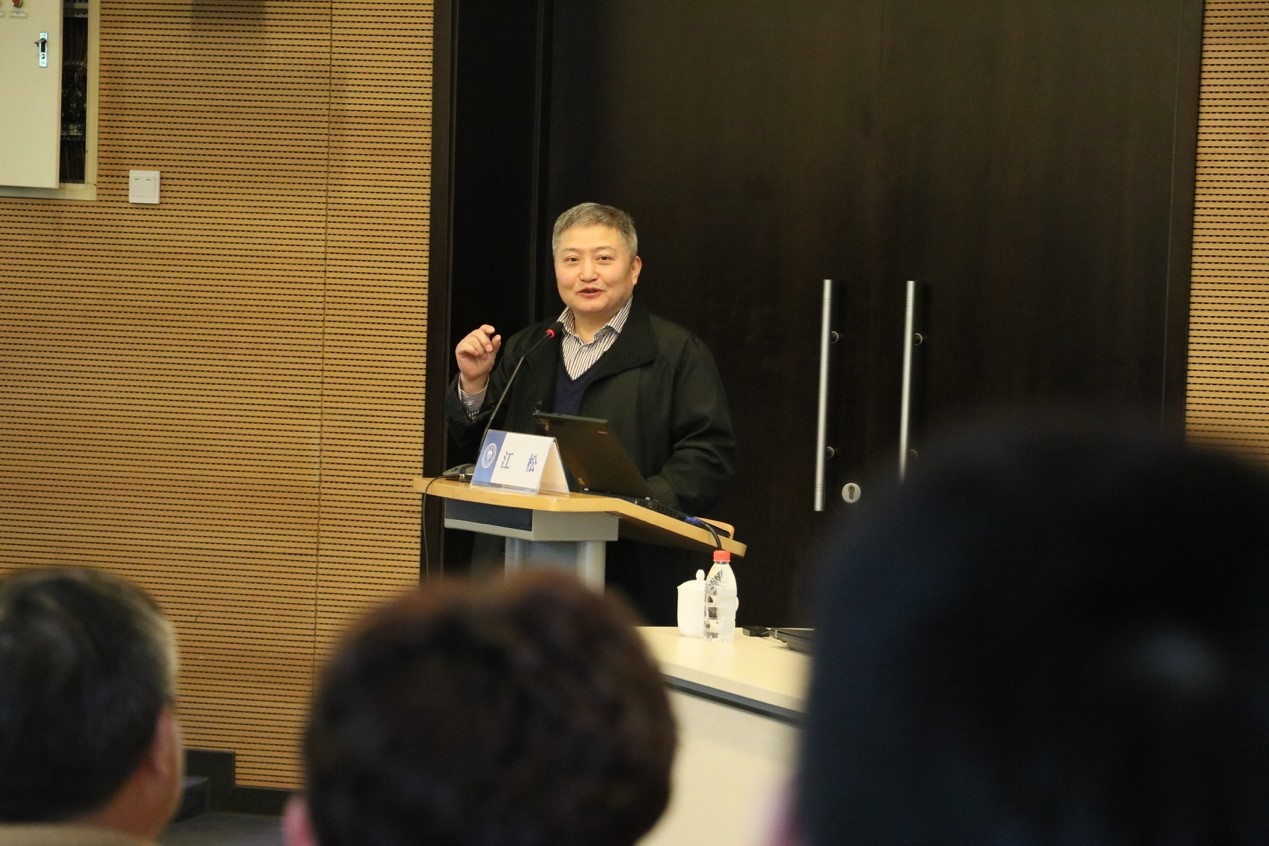Partial Differential Equation (PDE), an ancient branch of mathematics, is a mathematical model that promotes the development of many fields, and also a world-recognized difficult subject with great challenges. On April 20, 2019, Jiang Song, academician of the Chinese Academy of Sciences and researcher of Institute of Applied Physics and Computational Mathematics, visited Tianjin University and gave a lecture on “PDE: Function, Analysis and Numerical Solution” in the Conference Building, leading our teachers and students to explore the mystery of PDE. Sun Xiaotao, Dean of Mathematics College, presided over the activity.

“PDE and computational mathematics are two major fields in mathematical research. I hope whoever is interested in these two areas can have a better understanding through today’s introduction.” Jiang Song said at the beginning. Starting from the concept of PDE, he traced back PDE development from classical theories to modern ones, and explained the connotation of PDE. As a key tool to study other branches of mathematics, PDE has greatly promoted development of basic mathematical branches; a series of representative equations, such as Euler and Navier-Stokes equation, Maxwell equation, Boltzmann equation and Einstein equation, represents PDE and many fields are “inseparable”. Hearing that PDE can optimize aircraft design, predict black hole, and deduce social development, our students felt the infinite potential of this small equation.

With various sources and be widely used, PDE has different sub-fields, so “no core theory” is one of its important features. Later, Jiang Song elaborated on the basic problems in PDE, that is, well-posedness of equation, namely existence, uniqueness and continuous dependence of the solution, and bought internationally recognized difficult problems in math, such as hyperbolic conservation law in high-dimensional space, Millennium Problem of Clay Mathematics Institute (CMI), etc. Although there have been some recent advances and achievements, these challenging problems are driving scientists of different times to continue their exploration. Problems driving study of PDE, he enumerated hot and common issues in the field of basic mathematics and application, involving environment, biology, finance, materials and other aspects.

Numerical solution is closely related to PDE study. Looking back around on the development of computational mathematics, we find exquisite solutions emerge endlessly. With the advent of computers, many effective methods such as finite element, FFT, etc. have been proposed and focus on computational mathematics research has gradually turned into large-scale scientific engineering computational research. Jiang Song pointed out that computer technology was changing quickly. Scientific circle was puzzled with computing complex problems and reliability of calculation results, so mathematicians could make efforts to develop fast and parallel computing methods.

Finally, he concluded that there were many problems to be solved urgently in PDE and computational mathematics, which are promising areas. PDE researchers need to understand computational science, and people engaged in computing should always pay attention to the status and progress of PDE too.
As for question section, some students are interested in equations predicting social development in science fiction. Jiang Song said that PDE could indeed predict social sciences such as population and environment, but we might start with part for social system has too many variables and random conditions. A student majoring in Computational Mathematics asked how to do scientific research. Jiang Song emphasized the importance of perseverance and hands-on ability in computing. He suggested that students majoring in computations should not only learn matlab and python, but also master programming languages such as C++. Solving computational problems by means of artificial intelligence would be popular in the future.
The report came to an end in a strong and relaxed academic atmosphere. He talked freely about PDE with anecdotes, quotes and examples, which left lingering impression on the audience, encouraging teachers and students to spread the truth and continue to dedicated to math research and make contributions to computational science.




